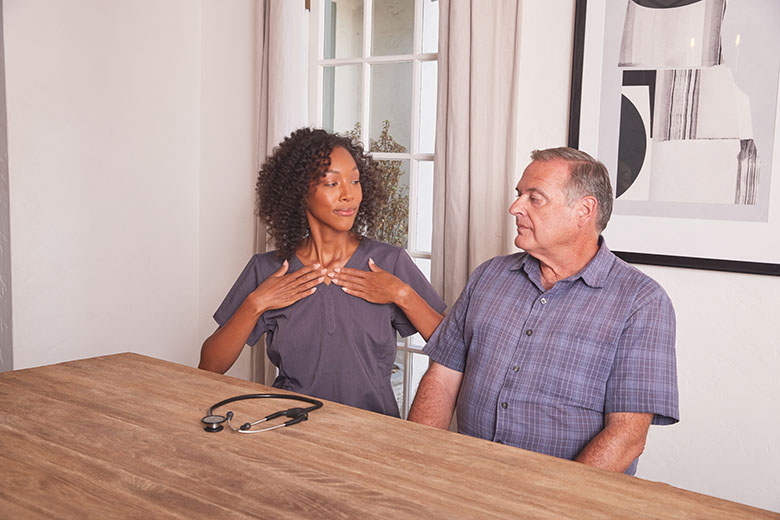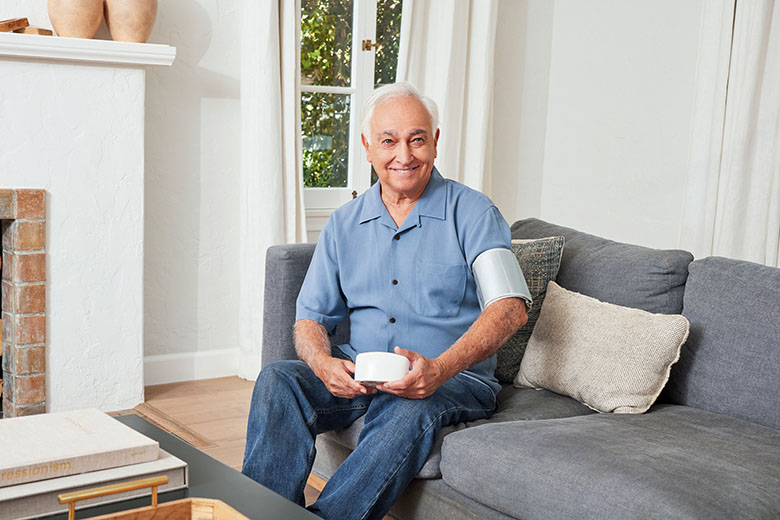Practice Pursed-Lip Breathing:
Remember, exhale 3-4 times longer than you inhale; do not force the air out.
- Sit up straight and relaxed.
- Breathe in—preferably through the nose.
- Purse lips slightly (as if to whistle).
- Breathe out slowly through pursed lips.
- Do not force the air out.
Practice this procedure 4-5 times a day initially to get the correct breathing pattern. You should utilize pursed-lip breathing when you are experiencing shortness of breath either at rest or with exertion, or if you feel nervous or apprehensive.
IMPORTANT: You may experience a lightheaded feeling while doing pursed-lip breathing. This indicates that you are over-ventilating yourself and you should breathe more slowly.
What Does It Do?
- Improves ventilation
- Decreases air trapping in the lungs
- Decreases the work of breathing
- Improves breathing patterns
- Relieves shortness of breath
- Causes general relaxation
How?
- Prolongs exhalation—slows down the breathing rate
- Causes a slight back pressure in the lungs that keeps airways open longer
- Improves the movement of old air out of the lungs and allows for more new air to get into the lungs
Diaphragm Breathing
Many people with COPD no longer use this important breathing muscle effectively. With this exercise, you can better-utilize your diaphragm while you breathe.
Practice Diaphragm Breathing:
- Lie on your back with your knees bent.
- Place one of your hands on your abdomen.
- Place your other hand on your upper chest.
- As you inhale through your nose, make your stomach move out and keep your upper chest as still as possible.
- As you exhale through pursed lips, let your stomach fall inward. Your hand on the upper chest must remain as still as possible during the entire procedure.
IMPORTANT: You will notice that an increased effort will be needed to utilize this muscle correctly. You will also notice—at first—that you will probably get tired doing this exercise. Keep at it. In a short time, you will notice that it will require less effort to breathe, and you will be rewarded by being able to do it with less effort in the future.
What Does it Do?
- Strengthens the diaphragm
- Coordinates diaphragm movement when breathing
- Less effort required to breathe
- Less energy utilized for breathing
How?
- Correctly utilizes the most effective muscle for breathing.When you are first getting started, practice this procedure for 5-10 minutes, 3-4 times a day.
- You can gradually increase the length of your exercise period and perhaps the effort required by placing a book on the abdomen.
- After you feel comfortable with this procedure, practice while sitting in a chair or while standing.


